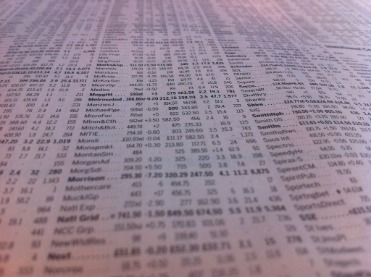Contents

Harold McKinley Gartley was a stock-market analyst and one of the first investors who applied scientific methods in order to explain the stock market behavior. Gartley published the book “Profits in the Stock Market” back in 1935. The Gartley pattern is in close relation to the Fibonacci numbers. Gartley patterns are considered high-profitability patterns with a success rate of over 70%. Get the XABCD Pattern Suite Scan, alerts and automatically draws chart patterns saving you lots of time.

Second, it’s provides you with a logical spot to place your stop loss order, below the swing low. Double bottoms form after price is rejected for a second time at a support level, indicting a potential reversal in price. Learning different day trading patterns to include in your playbook is one of the first steps of becoming a trader. The bearish pattern begins with a strong upward move – initial spike , during which buyers are aggressively buying thus pushing the stock price to it high-of-day.
More aggressive traders will initiate a short sell trade very near point D, with an initial stop-loss order placed a bit above point D. More conservative traders will wait for further confirmation of a trend change shown by prices falling below point C before making a short entry into the market. In a bearish ABCD pattern, you would be looking for the price to rise initially from to a new high of the day . After the price reaches , you would be waiting for a dip back down to support . Once support has been established at , you are almost ready to enter a short position. The price should begin to rise from its support at up to a new high.
Once the price reaches , this is the optimal point to enter a short position. It is also worth remembering that the value may increase again later in the day. This is another reason that the investor should not run the risk of holding out when the value dips past the investment point plus the risk value.
It broke out late afternoon, which was the entry signal, and rallied 11% from the breakout level. The ABCD pattern helps give traders a framework for where to risk and enter their trades. This prevents chasing a stock and getting shaken out in the midday pullback. The ABCD pattern, though varied, is one of the most reliable and established patterns in trading.
- It’s not necessary to remember all the individual names of the patterns, you just need to understand the logic.
- As you can see, we went for smaller stops, and there is a reason behind it.
- This also helps identify where the pattern may be completed, and where to open your position.
- After the wick formed on the 15 minute chart, we define the extreme price zone of the wick as an opportunity zone.
Each of the five points show an important low or high in terms of price on the chart. Thus, the four previously mentioned legs represent different trends or price movements which move in opposite directions. The bullish ABCD pattern forms during a downward trend and indicates a potential price reversal, meaning the beginning of a bullish trend.
Bullish ABCD pattern
One of the best ways to look for this is on the high/low scanner that your brokerage or charting platform provides. Click here to signup and claim your 7-days free trial to the best harmonic pattern scanner. A possible solution would be to choose the impulse leg that coincides with a structure resistance or support. Usually, the more confluence you have, the higher the probability of your trade. The ABCD is a Harmonic pattern that describes a potential reversal. Gartley and presented in the book “Profits in the Stock Market.” Later, Scott Carney further developed the ABCD pattern.
A reference to any security is not an indication to buy or sell that security. After the wick formed on the 15 minute chart, we define the extreme price zone of the wick as an opportunity zone. Well we will assume that if price retraces back to the extreme of the wick that formed, that buyers will once again be the aggressor at those price levels.
If a https://forex-trend.net/’s very choppy or putting in more volume than the A leg during this period, it’s best to skip it. It might be a sign that there are a lot of short sellers fighting the buyers. And since the stock closed fairly strong, traders could have swung this overnight. The stock gapped up the following morning to the $3,730 level.

In strongly trending markets, BC may only be 38.2% or 50% of AB. In a ‘classic’ ABCD, the BC line should be 61.8% or 78.6% of AB. IC Markets are my top choice as I find they have tight spreads, low commission fees, quick execution speeds and excellent customer support.
Using Bollinger Bands to Time the Rectangle Pattern
This indicator can automatically plot the highs and lows and thus identify the traders to any potential ABCD patterns. We call these chart patterns and traders like you use them to understand price action and build trading plans. ABCD pattern trading is something every day trader needs to have in their arsenal. And it is far and away the most consistent pattern because it’s rooted in market fundamentals. We examine how to use this pattern, its variations, and a couple of useful indicators that you can use when trading this pattern on the markets. By using the built-in ABCD indicators, we were able to identify this geometric pattern with two Fibonacci rules.

The pattern gives you an entry area with a stop just outside, and a target can be as something as simple as a pattern point. With this information you can consistently look at the risk vs reward level the same way each time. If you can predict when a trend reversal will occur, you can use that information to your advantage by entering either long or short positions before the reversal.
https://topforexnews.org/ pattern is a large reversal price chart structure that can be both bearish and bullish. This pattern is the same as the corrective wave in the Elliott Wave Theory. Those who do not follow Elliott Waves study this pattern separately.
How to find the Gartley Pattern
Then, the price falls from B to C and finally rises again from C to D. HowToTrade.com helps traders of all levels learn how to trade the financial markets. As you can see, much like the bullish ABCD pattern, the bullish AB line is 61.8% of the AC line, and the CD leg is 127.2% of the BD leg. In this case, the D point is the market entry-level, stop-loss is placed above the D level, and profit targets are placed at the C and A levels.

As a first step, use the first swing which will make A-B leg. When you have the first leg then you need to wait until the market reverses back from the B point towards A point. In a ‘classic’ ABCD, the BC line should be 61.8% or 78.6% of AB. So, if you use your Fibonacci retracement tool on the initial move from A to B, BC should end at the 61.8 or 78.6 level. Update it to the latest version or try another one for a safer, more comfortable and productive trading experience. StoneX Europe Ltd products, services and information are not intended for residents other than the ones stated above.
A large wick on a candlestick illustrates a fast rejection of price level, signaling capitulation and a potential reversal. A bearish channel, seen below, is simply a channel that forms in a downtrend. You’d look to short at the upper portin of the channel and set your take profit at the bottom of the channel. Rarely are you going to find the perfect pattern where price perfectly touches a support or resistance level multiple times. In the same manner, when price is at point 1 of the support line traders are getting long and placing their stops below the support level. In the example we have been using with the SPY chart, this would be a bear flag.
https://en.forexbrokerslist.site/ important to note that with all of these patterns that the shape of the consolidation won’t always be a perfect pennant or flag. Once again, both are nothing more than consolidation patterns. If you can’t explain the logic behind something in your strategy, you shouldn’t be using it.
Again, it’s not necessary to remember the names, they’re all simply consolidation patterns. Now that you have an understanding of consolidation, it’s time to look at some different examples. Eventually a large enough of an imbalance will form and price will break through support or resistance. The longer price consolidates, the number of stop orders placed above resistance and below support continues to rise(point 2 & 3).
How do public holidays affect the Forex market?
Price Consolidation is when a security trades in a range due to buyer and seller aggression being in equilibrium. Price will continue to consolidate until a new buy or sell imbalance forms. A Trading Pattern is a structural or consolidating price formation which can forecast the future price direction of a security. • First; if after point C has occurred and a gap exists in the direction of point D, this will usually indicate that the CD leg will be much greater than the AB leg. • CD leg is an extension of AB of anywhere from 1.27 to 2.00 or greater.
